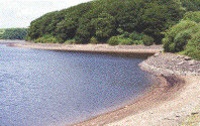Closing the loop on water waste

Even though water is a renewable resource, it can be a variable resource — so using it efficiently is a major issue.
Despite higher than expected rainfall during summer 2009, UK industry cannot afford to turn a blind eye to water wastage and effective resource management. Particularly as companies tackle the consequences of the recession, the cost-saving potential of water efficiency could actually become a valuable tool in helping to protect the bottom line.
Similarly, while Ofwat has recently called for water bills to be reduced in many areas of the country, everyone must remain alert to unnecessary water waste. This can help to keep costs down and offer a buffer should our rapidly changing climate offer sudden, drier conditions and potential water restrictions at a later date.
Water efficiency should feature high on the agenda for those designing, developing and maintaining the UK’s buildings. Making positive, water-efficient choices at the start of the building process can equip businesses and householders to better preserve this precious resource and avoid unnecessary costs in the years which follow.
In fact, a number of water-efficient products and technologies are recommended under the Government’s Code for Sustainable Homes. The code covers a series of categories which use stars to communicate the overall sustainability rating of a new building from one to six. For example, the code includes a minimum standard for internal potable water, which suggests that a home should be designed to use no more than about 120 l of water per person per day. This consumption can be achieved by specifying water fittings that meet the overall performance standard, which would include some water-efficient items such as flow-reducing/aerating taps, a 6-to-9 l per minute shower or a dishwasher with a maximum usage of 18 l. An additional standard is available for ensuring surface water management by providing soakaways and areas of porous paving around the home.
A wide range of water-efficient technology is available to help the construction sector make these specifications. The Water Technology List (WTL), managed by AEA Group on behalf of Defra and HM Revenue & Customs, lists products that can help meet the published water efficient eligibility criteria of the code.
The web-based WTL, available at www.businesslink.gov.uk/wtl, details more than 2100 technologies and products within specific categories such as efficient toilets, taps and showers.
The WTL is part of the Enhanced Capital Allowance (ECA) scheme for water efficient technologies which offers upfront tax relief on listed water-efficient products for businesses which pay income or corporation tax and which purchase products on the WTL.
While building firms may not be eligible for tax relief in the same way as individual businesses, the WTL can be valuable as a green procurement tool — supporting the code requirements. The WTL can also be used by organisations that are not liable to tax, such as local authorities, schools and hospitals, again as a green procurement tool. An online product search facility allows users to identify water-efficient products included on the WTL, and to find contact details for manufacturers and suppliers of these products.
For example, dual-flush toilets — which provide a choice of 4 or 6 litre flush — are relatively low cost yet can contribute to significant water savings. Similarly, specifying spray taps can secure water savings of up to 10 l per minute by reducing and regulating the flow rate. Water-saving shower heads can also reduce flow rate to around 8 l per minute.
All these technologies could help building developers work towards the daily water limits required by the code. Many technologies are also available in retrofit options, meaning facilities managers and individual businesses may be able to benefit from the ECA by buying products from the list.
For example, between 2004 and 2006, Lloyds TSB worked with Dart Valley Systems, whose products are listed on the WTL, to commission the installation of Flushmatic urinal controls to provide automatic flush on demand rather than a constant stream of water. More than 300 of these controls were installed in relevant branches, as well as retrofit displacement devices to reduce flush volume on traditional toilet cisterns.
The company achieved average reductions of as much as 50% per branch, bringing water use per employee down to 7 m3 per year as well as raising awareness of water conversation among employees.
Kate Davis, AEA Group Water Specialist, says: ‘There are opportunities at every stage of a building’s life to ensure water efficiency and by using eligible products or systems from the WTL, businesses can benefit from tax relief via the ECA.
‘Not only does water-efficient technology help you to reduce water usage in the first place, there is also a range of innovative options for water recovery and reuse — particularly beneficial in an industrial setting. For example, many food and drink manufacturers are already benefiting from a process called membrane filtration which allows waste process water to be purified and re-used — easing demand on drinking-quality mains water and helping to lower water bills.
To find out more about registering or purchasing products on the WTL, please see link to web site below or email wtl@aeat.co.uk or call 0844 875 5885.








